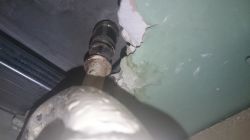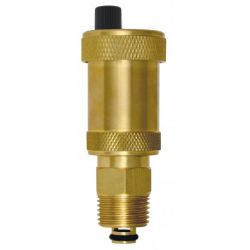Hello, I live on the top floor in the block and in the bathroom I have a vent on the pipe which is in the shape of an inverted letter "U" and on its top is a pipe to which the vent is attached.
Water started to leak from the pipe, the technicians came, looked and said that I was to make a hole and hit this "pear" lightly on top with a hammer and went.
Because of the fact that I don't know much about hydraulics, I said "ok" and I followed the command + I additionally tightened the plug which was at the very top. The water stopped dripping. I do not know whether because of a knock or tightening the cork.
My question to you is: Can this plug be tightened? Or how? On Monday I will get to cooperative technicians but I would like to be able to sleep peacefully so I write here.
I attach a photo. I can't do better because the previous owner shot this building. The second photo is what I think I have - it's supposedly called the automatic air vent.


Water started to leak from the pipe, the technicians came, looked and said that I was to make a hole and hit this "pear" lightly on top with a hammer and went.
Because of the fact that I don't know much about hydraulics, I said "ok" and I followed the command + I additionally tightened the plug which was at the very top. The water stopped dripping. I do not know whether because of a knock or tightening the cork.
My question to you is: Can this plug be tightened? Or how? On Monday I will get to cooperative technicians but I would like to be able to sleep peacefully so I write here.
I attach a photo. I can't do better because the previous owner shot this building. The second photo is what I think I have - it's supposedly called the automatic air vent.




